/Dialogue | Reading Time: 26 minutes
On Iranian Diaspora Studies
A Conversation between Persis Karim and Amy Malek
Persis Karim & Amy Malek | June, 2025
ISSN 2818-9434
Amy Malek (AM): You’ve been a trailblazer in the establishment of Iranian Diaspora Studies as a field of study and also have contributed to its growth from a small, rather loose network of a handful of scholars to a thriving subfield. I’m curious, what were some key early events that you organized or participated in that you feel contributed to the field’s emergence?
Persis Karim (PK): Well, in my immediate orbit, Iranian Diaspora Studies emerged after I had published the book, A World Between: Poems, Short Stories, and Essays by Iranian Americans (1999), which reflected a bridge between Iran and the Iranian-American experience specifically. The second publication, Let Me Tell You Where I’ve Been: New Writing by Women of the Iranian Diaspora (2006), is when I used the word “diaspora” to point to something more broad and more global in scope. I think that might have been one of the early public uses of the use of diaspora with regard to Iran; that was in 2006.[1] What I saw between that first publication and the second one was a movement towards using the term to describe people who had lived most of their life in the United States or Canada. And there were some submissions in that volume from Europe as well. So, editing that book expanded my view: We’re not just talking about Iranian Americans, we’re not just talking about Iranian-born people—this is much more generous and expansive. I saw in this later work some iteration of storytelling, experiences, and documentation that included a much wider range of people from a wider swath of geography; using the phrase “Iranian diaspora” in the 2006 title suggested a globality, rather than a more singular idea of immigration. It was also reflective of a longer history, as opposed to a unique post-1979 moment. I liked the idea of that phrase catching on. I don’t think I’m responsible for it, but perhaps it was made more visible at that moment.
I also moved this phrase to the foreground when I was teaching at San Jose State University, after I received a major grant from the Parsa Community Foundation (PARSA CF) to create and build an initiative, “Persian Iranian American Studies Initiative,” (PIASI) in 2010. I saw an opening for this new attention to diaspora. I felt was necessary to articulate the idea of Iran and Iranian American being together. This more organically articulated the idea of diaspora experience. I later got a second significant grant from the Roshan Cultural Heritage Foundation to build on this initiative in 2012. I used those resources to launch and establish what felt like the earliest institutional iterations of Iranian diaspora studies.
In 2011, Babak Elahi and I guest edited an issue of Comparative Studies of South Asia, Africa, and the Middle East (CSSAAME) on the Iranian diaspora. I approached Babak and said, “Do you want to do this with me? Because there is a critical number of scholars working in this field.” The topics focused on the disciplines of anthropology and literary studies, less so in history or sociology; ultimately, though, this publication gave visibility and a language to our field.
AM: Definitely. Your introduction to that issue became a very well-cited and useful publication for a lot of people to ground their use of this language.[2]
PK: Also, around that same time, in 2009, Nasrin Rahimieh and I hosted the inaugural conference of the Association of Iranian-American Writers at the University of California, Irvine, and in 2014, I hosted a conference at San Jose State University, called Cultures of the Iranian Diaspora. Both conferences were important because they foregrounded culture; the second conference included visual arts, film, and music. And in 2016, I hosted a second conference, “Engaging Iran and the Iranian Diaspora” in the aftermath of the JCPOA (also known as “the Iran nuclear deal”).
These conferences and publications were first iterations of the field, I suppose. They were instrumental in developing a conversational language for our field. They also engaged academics and non-academics and so the field evolved both in the academic sense, but also through art and culture. By the time I started the Center for Iranian Diaspora Studies at San Francisco State University in 2017, it seemed clear that it was time to bring these fields into closer conversation.
AM: It’s telling that you highlighted conferences; they can be so generative for a new field. For me, the conferences that were formative were the International Conferences on the Iranian Diaspora organized by US -based non-profit Iranian Alliances Across Borders (IAAB), between 2004 and 2012. There were five conferences in that period held across the United States. I was deeply involved in IAAB and worked closely on these events; those were such important formative spaces for many of us.
PK: Yes, and actually, the IAAB conferences really gave me some food for thought about the idea of diaspora being the language that was beginning to catch on.
AM: I want to go back to your observation that getting submissions from people from around the diaspora for your second book opened your imagination about what the diaspora is. Similarly, for those of us who were starting IAAB — that organization only came to fruition because we (IAAB founders) met while studying abroad as undergraduates. We were Iranian Americans but we didn’t meet each other until we were in Europe, and we were seeing the differences of the Iranian community in London, for example, compared to in DC, or in LA, or other places. It was an “A-ha” moment where we realized we’d only seen a very small slice of a much bigger, more diverse group of people. So those conferences were a way to question “who are we?” but also, how can we build our networks and better understand ourselves in a more global perspective. “Across borders” was very intentional. We felt kind of stuck in an American box that, once opened, revealed so much more of the story, and so many interesting questions and ideas and people. So, even though you and I were working in different spaces, from the get-go for both of us the draw of the word diaspora was in its globality and dynamism. It was a term that could hold so much more than Iranian, Iranian American, or immigrant.
I remember one of the things that helped me and stood out to me as a junior scholar was that you all were also trying to make spaces for Iranian diaspora scholars within larger academic spaces that already existed, like Middle East Studies Association meetings, or Association for Iranian Studies conferences (then ISIS). We were both active in trying to develop conferences that could bring people together in our own spaces in the 2000s, but the greater challenge was actually getting other folks, not in Iranian diaspora studies, to recognize the value of the study of this diaspora. I remember being at my first MESA conference and it felt very much like we were on the margins. My friends and I who were working on diaspora topics didn’t get a paper accepted at MESA for years because we weren’t already in the networks, which is another problem of institutions, but also because they didn’t really value abstracts on diaspora studies. That is, until Arab American Studies folks began organizing and then you all [those who were already working on the Iranian diaspora] would organize something for this express purpose, like the thematic conversation, “Whither the Iranian Diaspora? Methodological Questions for Scholars and Activists” organized by Amy Motlagh in 2010. I remember being on that session with you all as I was studying for my qualifying exams on diaspora studies, and it was a really important session to have held at MESA. It wasn’t at our Iranian diaspora studies conferences, it wasn’t at Iranian Studies, but at the Middle East Studies Association. And that was where — even then, in 2010 — we had a little bit of pushback from some folks over using the word diaspora or not. I remember from that conversation debating what diaspora “means.” My quals were on my mind, so I was coming in with citations and interjecting about what that literature was and wasn’t claiming, and how the larger field was moving in a direction of thinking of diaspora as a category of practice, as processual, dynamic, and as capable of describing a lot of what we all had been experiencing. And in ways that other concepts like transnational alone didn’t do, or that immigrant didn’t do. I think we made a strong case for why “Iranian diaspora” is a term of art we should be using. Those are some of the foundational moments that mattered so much to me, especially learning that there were folks like you and Amy and Babak and others who were already carving spaces for us to have those conversations.
PK: I think that’s a really good point, that the push for recognition was happening in multiple areas. And the utterance of “the Iranian diaspora” became sort of omnipresent in a number of disciplines and institutional bodies. And, I think then people started saying, “Oh, okay, this is a real thing.”
AM: Yeah, and it was getting picked up by the community, so, that by 2010 I could say at that MESA session, “Listen, even if I didn’t have all these theoretical reasons for why this term makes sense to use, my interlocutors use it. It means something to them, therefore we need to take that seriously and we need to understand it better.”
PK: It’s also important to note the geopolitics of that period; they were instrumental in us needing to deploying a term like that. Because after 9/11, Iranians were being implicated in the narratives of terror, and yet we didn’t have the same established field that Arab Americans had in some associations. So the term also reflected the fact that our experience was in some ways different, but also related to these other communities and experiences as well. The politics of the 2000s also required some recognition of like, “Hey, wait a second. We’re being collapsed into all these other narratives. And yet we also have this very different trajectory with the homeland.”
AM: I remember very distinctly, in 2007, 2009, and 2012, we held Iranian diaspora conferences at NYU, at UC Berkeley, and at UCLA. At each one we held workshops that were run by know-your-rights campaigners, or folks who were advocating for Iranian American civic participation and community building, especially as a result of post-9/11 discrimination and prejudice. So many in the community in those years were trying to respond to a sense of misrecognition, of injustice, and the ways geopolitics were getting to represent who we are, instead of us getting to represent who we are.
PK: Absolutely. I think that’s why it’s so important to recognize that this field’s evolution hasn’t been purely academic. It’s an ongoing evolution. And, as you pointed out, it is very dynamic in response to bigger global historical events, as well as local events – and what was happening in Iran was also instrumental. The 2009 election caused another surge of Iranians to come to the US, and that gave us the sense that this diaspora was being renewed or regenerated in new moments. And then, likewise, the first Trump administration brought another set of challenges, with the first “Muslim Ban” (2017). These kinds of bigger events were part of the necessity of having language for what was happening, and, as you say, it was not localized to one specific place or one specific geography, or even the transnational, because it reflects something else that I think is much more complex.
AM: I think there’s this unfortunate judgment that sometimes gets passed on Iranian Diaspora Studies by some folks in Iranian Studies, that, first of all, what we do is somehow unserious, and second, that it is somehow disconnected from Iran. There is no Iranian diaspora without Iran. What happens in Iran affects the diaspora very closely — and as you’ve noted, also vice versa, and for better or for worse. It is very serious.
So by the mid 2010s, we clearly had established a small but strong network of scholars interested in the Iranian diaspora, such that the first Center of Iranian Diaspora Studies gets established at San Francisco State University in 2017. Can you say a little bit about that process and the vision that you had in establishing the Center?
PK: Yeah. So part of what had been motivating me at my previous institution, San Jose State University (SFSU) was that I got these smaller grants of $500,000 -$550,000 which was a kind of recognition of this work—that it was meaningful, and people were awarding some funding for it. By the time the donor at SFSU made their gift, they understood that there was something important happening in our field. She asked me, “What would you do if you had resources at your fingertips?” And I said, “You know, there’s a need to keep studying the Iranian diaspora because there’s a lot of people who are connected to Iran, but don’t feel Iranian or can’t go there, or who feel Iranian American, but don’t know exactly what that means in the political, cultural, and historical sense. She wanted to make a gift to SFSU partly because of her association with the University, but also because SFSU had a reputation around Ethnic Studies and social justice. Also, because it was in Northern California. There was an appeal to building this field in California, but not in Los Angeles, where much of the scholarly focus had already been.
Once the gift to establish the Center was made and after I got the job as the director, I had to write a mission statement. We might have called it the “Center for Iranian and Iranian Diaspora Studies” similar to the Centers of Iranian and Persian Gulf Studies, but it was clear there was a need for a unique focus. There were already quite a few Iranian Studies centers in the US, but no one was focused on Iranian Diaspora Studies. This aligned with the donor’s vision and my own. I can see some of the disadvantages, that sometimes it may seem that Iran and its diaspora become separated, but I think one of the advantages is that by giving our field an institutional recognition and a home it was elevated in really important ways.
I wanted to the Center to reflect two ideas: to be a bridge to the community, both locally and globally, and to make a serious effort at building academic discourse and solid resaerch. Right away, I felt it was important to try to bring people in that maybe hadn’t really known or experienced the networking that you referred to earlier. Directing the Center was both important and challenging in that growing the field of Iranian diaspora studies wasn’t necessarily speaking to the community, and the community wasn’t necessarily aware of the field. I realized that, “Okay, we’re coming up on 40 years since the revolution. This would be the moment to do a conference.” And, I think the 2019 Conference at SFSU[3] gave a big boost to the field, and, of course, to the Center.
AM: Yeah, that was a field-defining event that brought so many people together from different disciplinary and geographical corners of the field, from different generations, and alongside artists and activists. It was also more global. It became very evident there that this field had grown substantially and was poised to grow even more. The next conference we collaborated on in 2023 at UCLA[4] was, I think, also a formative moment where (coincidentally) we were collectively processing Women. Life. Freedom. in real-time, including all the fundamental changes we were experiencing and observing in the diaspora. I was also struck there by how many junior scholars and graduate students were doing such impressive work.
PK: Yes, indeed. My training was in literary scholarship. And I was always driven by the notion that storytelling or representation through one’s own narratives or one’s own experience was key. This is a field that still needs stories and documentation and to thoughtfully narrate itself. One of the things that was a great surprise and advantage to me personally was having done those earlier anthologies, I was the curator and the commentator and the midwife, you know. And I hope and think this has been exemplary about our field: that it has not been a top-down endeavor, but rather an emerging and collegially-generated one. That is also what’s made this a welcoming field. We want more voices. We want more experiences. We want more fields. This is one of the visions that I wanted to promote in the Center— that there’s no hierarchy here, but rather, “Let’s build this together!” I’m probably most proud of that as part of my legacy at the Center.
AM: Yeah, absolutely. Can you think of some examples outside of your field of literary studies that you feel have guided Iranian Diaspora Studies in new directions in recent years?
PK: Yes. Neda Maghbouleh’s book, The Limits of Whiteness (2017) was really important. She gave voice to an experience that a lot of us had, or were thinking about. The idea of a racialized experience of Iranians in the US, particularly after 9/11 but even before then, and I think that has been one of the most interesting and important books for younger generations. Neda’s book lent greater visibility to this idea of Iranian diaspora experience and to the process of being racialized, particularly in the U.S. context. Since then, I’ve seen lots of really interesting work happening in that realm.
Also in Queer Studies, with LGBTQ+ people articulating ideas about queerness of the Iranian experience in wider Ethnic Studies, but also in the experiences of Iranian queers, such as the NQIfFM collaborative and comparative research project about identity among queer Iranian refugees, based at the University of Sussex.[5] These are two important areas that reflect disciplinary evolutions in Ethnic Studies, Migration Studies, and American Studies.
I also have been thinking a lot about cultural innovations. That has been one of many suprising aspects of this field: the ways in which people are drawing on more traditional Iranian culture and music and visual arts, and then reworking it and redeploying some of these traditional genres in this moment of the 21st century diaspora. It’s Iranian, and it’s something else. Examples of this are Taraneh Hemami’s visual art in “Hall of Reflections,” or musical genres that are blending say, jazz, and traditional Iranian instruments such as in the work of Hesam Abedini or Hafez Modirzadeh.[6] But there are still gaps in the field and opportunities to develop, what do you think some of those are?
AM: Since our field is relatively young, there are many areas I see as opportunities for growth, especially in the social sciences. We have talked many times before about the need for a broader historical and geographical view of the Iranian diaspora – beyond post-1979 and beyond North America and Europe. And the need for more comparative research – whether across different Iranian diaspora contexts or between Iranian and other immigrant communities.
I think one reason we have not yet seen as much comparative work is because it can be super challenging. It’s something that I attempted for my forthcoming book, Culture Beyond Country.[7] There I undertook a comparative ethnography of Iranian diaspora cultural production in the U.S., Sweden, and Canada. I was always trying to think about the diaspora in a global perspective but quickly came to realize how difficult it is to do and fund comparative research as a single ethnographer. So I think one of the big gaps in our field remains comparison — not because there isn’t interest, but because it takes a lot of focused time, resources, and energy to do. I think we have started to see more comparative work, like the NQIfFM project you mentioned. But there are so many questions for which comparative social science research would be valuable. Comparing the experiences of Iranians with other refugee communities, not only in Northern Europe, but in Eastern Europe, or paying closer attention to communities in Iran’s neighboring countries and around the Persian Gulf, about communities in East Asia, Latin America. There has been some good work in these areas already, but just so much more waiting to be given proper attention. Graduate student research plays a vital role in pushing the field in new and necessary directions. So, If you had a student coming to you in search of a new project in Iranian diaspora studies, what would you like to see started?
PK: You know, something that’s near and dear to both you and me is how “half-Iranians” (having one parent who is Iranian and one who is not) are conceiving of themselves in this Iranian diaspora. That is fascinating to me. I don’t have a very rich commentary about it, but there’s something really interesting about the fact that a lot of the people that are doing Iranian Diaspora Studies are half-Iranian. What’s that about? What makes that such a compelling decision for us to choose the identification with Iranian culture and the pursuit of this research as somebody who’s half-Iranian? If you look at Iranian Studies, I would estimate 85% of those scholars are either Iranian-born, or the child of at least one Iranian immigrant. So there’s some, you know, arguable calculation about how, as half-Iranians, we’re in some ways trying to write ourselves into the world, into academic study in a way, because sometimes we’re overlooked or not seen. We have names that identify us. We have a visual appearance that identifies us. And yet I think it’s not been studied at all this question of people who are half-half, right?
AM: Well, and some of us have names and visual appearances that don’t obviously identify us as Iranian.
PK: That’s very true.
AM: When I was in grad school, one of the things that I found frustrating was when some of my colleagues and I would get dissuaded from pursuing diaspora studies for fear of being accused of conducting “Me-search” rather than Research; of not being taken seriously. Me-search, when used derisively, is the idea that working on a region or question or field that is related to your heritage or experience is seen as more of a study of yourself, or your personal identity, than “real” research. I never liked that, because at some level everyone who is doing research is doing “me-search.” We all pursue questions that are important to us. Maybe you grew up in a period of climate change, and your experience of that leads you to then do climate science. Maybe you grew up the child of Iranians who were forced to leave their homeland during a revolution, and you become a historian to try to better understand that history. Why would that be less rigorous than someone with a different background? I reject that. I think that for those of us with one Iranian parent, the idea of “me-search” is actually compelling, rather than repelling, because we are seeking and searching for something that better explains the things that our families went through, or the feelings that we have, or the experiences that we did — or did not — get to have.
PK: Well said. And then the other question that I think is driving some of this is the inaccessibility of Iran as a place for many people — whether as place to physically go to, to conduct research effectively and safely, or as a place that’s been so repeatedly vilified in the media that we’re driven by a need to correct it or understand it, or embrace it — in a way that seems nearly impossible. And I don’t want to suggest that we’re exceptional in that way, because I don’t think we are. But you know, I came of age in 1979, and I haven’t been able to go to Iran. And in some ways Iranian Diaspora Studies is a way that I have tried to both connect to and develop my relationship to Iranianness, to Iranian culture, to other Iranians. And I think that’s an important geopolitical reality for many of us; that closing represents a necessity to find new ways to understand what these geopolitical realities are doing to people in a diaspora context. We probably need to be talking more about the ways policies in a country like the United States or Germany or Sweden or Australia impact us — both on a local level, but also in a collective view of what we’re coping with as a community. For example, there was just the – I hesitate to call it a “12-day war” – the [Israeli and American] attack on Iran in June that was again another collective emotional eruption of “Oh, my God!” You know, this is what it is to be part of this diaspora; we have this collective angst. And I think we could probably study a lot about the impact of what might seem like geopolitical blips, but have real resonance among people in the diaspora for how they respond personally, how they respond collectively.
I like that idea that in some ways this field is very responsive; by necessity, it comes from responding to changing circumstances. As a result, it doesn’t get hardened or too comfortable with itself—it is dynamic. I am confident our field will respond, grow and become even more global, too. I have to trust that it will be taken up in new forms by younger scholars; what gets overlooked actually becomes the fodder for new beginnings, new articulations.
AM: I agree. I think there’s a lot of need for work on collective memory and trauma. I think in the early 2000s there were several studies that centered trauma and resilience immediately following migration post-1979. But I think there’s still much to consider about different experiences of trauma since then, and specifically about generational trauma and the ways that trauma lives in the body and gets expressed in both the family and community, and has impacts that ripple.
AM: I think if I could wish for a couple of new studies, it would be a) a deep urban history of the diaspora in Westwood and the San Fernando Valley (Tehrangeles), which somehow has yet to be done; and b) a proper demography of Iranian Americans. And – if we are dreaming big – a way to compare that reliably and over time with other parts of the diaspora. We really need to have a fuller picture of our diaspora beyond anecdotal accounts or even ethnographic data as it continues to grow and shift with ongoing migrations. Unfortunately, ongoing geopolitical events, economic sanctions, and the socio-political situation in Iran suggests there will likely be continued emigration. So what kind of challenges do those folks face? What kind of demographic changes does it lead to? Every time we see increased emigration out of Iran, we see impacts in new and different ways, whether the development of new diaspora communities or new lines of divisions that end up having an impact on how newcomers can settle and become part of a community – or face challenges in doing so.
Of course, we are not the only community in the United States or elsewhere that has this problem. A lot of immigrant communities face these challenges of demonstrating their numbers and why that matters, even in countries that have a better Census or more accurate government data than the US does. But as a non-demographer who has tried to do comparative work with different governmental statistical data, it is very difficult. Those data often are not easily comparable. For one, the categories aren’t the same: one country might ask about ethnicity; another might use language as a proxy for ethnicity. Another one uses national origin or place of birth, which excludes second or third generations. One asks about race, another one doesn’t. So we don’t really get a clear picture of our global diaspora. It’s a big challenge.
PK: And it’s not enough to just have the numbers. You want to be able to follow it longitudinally, and that takes resources. But it also takes planning and human labor and vision.
AM: Yes, absolutely. As we’ve been talking, I’ve been thinking about the New York Persian Parade. I had been following the parade for several years when I lived in New York. I was amazed at the time that this thing existed; like, wait, we don’t have political representation or much of a presence in mainstream media, but we’ve got the Imperial Guard on a float going down Madison Avenue in New York City? Starting in the early 2000s, I began observing over and over again — at first just as a person in the diaspora, then as an anthropologist — that there were so many resources and so much time and energy being put towards trying to counter what many Iranian Americans viewed as a persistent misrecognition. That we are not this, we are not that — so much emphasis on countering media representations and to put forward a vision of “this is who we really are.” That experience stayed with me and ultimately shaped the article you so generously included in your 2011 CSSAAME special issue on the Iranian diaspora.[8]
The challenge of course is: who are we really? It is a question about Iranian identity, and that of course is neither fixed nor singular. Who and how do we determine how we should be represented, and what resources are we pulling on from collective memory, from nationalism, from education systems in Iran, and from our family narratives — the ways that our parents and our grandparents narrated “who we really are.” And when those narratives clash, community disputes come up. Those frictions are where anthropologists can discover deeper meanings and what the stakes are for a community. In the field, the cultural workers that I was interviewing for my book in many different parts of the diaspora repeated that their biggest challenge was teamwork. They’d say: “We don’t work well together. Iranians cannot collaborate. Everyone has an ego. Nobody wants to be told what to do.” There’s also a mistrust that comes from politics or from experiences or relationships back in Iran; A lot of the folks that I was interviewing who were working on cultural projects were trying to forefront ‘who we really are’ but, also, secondarily, trying to create opportunities to practice working together and emphasizing teamwork, leadership, volunteerism, democratic practices of collaboration, etc. In a way, they were using culture as a stone for two birds, so to speak: Culture is often seen as apolitical and so a way that we can all get along and work towards a common goal, and culture is the way that we can represent ourselves to the mainstream in a more “authentic” or safe (e.g., apolitical) way. And so that’s where the nexus of this comparative book lies.
The reality is, of course, that we don’t all agree on culture (think of disputes over Haji Firuz, for example) and culture is not apolitical. The way that many end up using culture to represent Iranians in diaspora is often in line with nationalist discourses, or the bounds that states expect immigrant groups in Western multicultural societies to perform within, etc. So it ends up sometimes towing a neoliberal line about the role of immigrants in a society, whether economically — as in U.S. forms of contributionism where belonging is purportedly earned through financial contribution as “Economic Americans” – or in terms of behavior – as in expectations of “professionalism” among cultural non-profit organizations in Sweden or Canadian multicultural contexts — that end up replicating Western liberal understandings of democracy and freedom that effectively disallow certain politics or practices. So when you’ve got internal division, which we all have in our diaspora communities, what do you do with these competing interests?
PK: Well, I just want to reiterate something you said that I think your book does very well, which is articulating the idea that culture is politics rather than assuming that they’re separate entities—both in the terms of states and how states view culture and cultural acceptability or cultural assimilation, and also how people in their own context, how Iranians, for example, have a lot of anxiety about what Iranian culture is and what aspects of it are going to be acceptable and endure. And I think it’s well-articulated in your work, and also in Neda Maghbouleh’s book, where she displays some of the intergenerational disputes around parents who promote a kind of nationalist and Aryan, if you will, view — versus young people who are raised in a US context who critically examine some of their parents’ or their elders’ views of culture and race in a new context. I think those are important criticisms and debates we’re likely to continue to have, and especially in a moment like this, where there’s an attack on immigrants in so many countries. When people feel under attack, they start looking for somebody else to blame or attack, and we’ve seen this. It’s not a pretty picture, but I think it is a place of opportunity for comparative work, to see how people in different locations respond to these bigger historical episodes and events taking place, and how they articulate something about who they are and what Iranian culture is. Your book speaks to the immediacy of what’s happening in the rise of right-wing politics all over. Not just in the United States.
AM: Right. The book took a long time to complete: it started with a dissertation and then follow-up fieldwork over the course of a total of 16 years. So it became a longitudinal view. It helps to stand back from the initial fieldwork and realize it was a particular moment in a longer history. So this book feels historical to me, because by the time it is going to come out, the priorities or urgencies of my interlocutors have changed. In Sweden, for example, you saw the rise of the Sweden Democrats beginning during my fieldwork and only growing in the 2010s, becoming the second largest party in Swedish Parliament now, and the xenophobic rhetoric and nationalist sentiments that came with it. I think there’s a kind of bittersweetness to when I look back on some of that material, because it felt very hopeful in some ways. But over time, conditions politically and socially have changed. In the US context as well: we can see how different 2025 is from 2005 and from 1985, not only in terms of national politics, but in terms of our representation in the media, in terms of our political participation and representation, in terms of our community, its size, its diversity, its level of establishment. So much is not the same within even just a 10 year period, so that the urgency that someone felt in 2003— in that very tense post-9/11 moment and ramp up to war—to organize the first Persian Parade in New York City the next year is not necessarily the same urgency that you might feel in 2025. There are other concerns that we now focus on, because either the political moment requires it, or because these kinds of events and efforts have begun to establish Iranians in the mainstream.
And here I also have to mention the impact of the Women. Life. Freedom. uprisings and the role of the diaspora in it. I think there’s a tendency to look back at 2022-2023, even just two to three years later and see it as such a watershed moment, where there was an outpouring of diasporic solidarity and activism that, among other things, led to greater understanding in the West that Iranians are not their government and that Iranian women, in particular, are not passive; they are strong, brave, and resist oppression. And that understanding marks a big change from problematic ideas that were prevalent in the previous decades. But within the diaspora, I also remember that period as an explosive moment of deep anger that turned into suspicion and unprecedented attacks against people without evidence or justification. It was a time when accusations and disinformation ran rampant online and a lot of divisions emerged that we’re still dealing with. One of the reasons we don’t have a national organization in the US that can respond effectively to a renewed ban against visas for our Iranian family members or students, or against ICE raids on law-abiding Iranian Americans regardless of their status, is because of some of those experiences of the last 3 years, unfortunately. There was a total undermining of so many of our networks and institutions that had been built laboriously since 9/11.
PK: No, I think that’s right. And that’s also worthy of study.
AM: Yes, and some scholars are already writing about that, thankfully.[9]
I want to close our conversation with a big dream question: What do you wish for Iranian Diaspora Studies in its next phase?
PK: Well, I think in the face of the attacks on higher education in this country — against DEI, ethnic studies, you name it — we have a whole new horizon of trouble and disruption to deal with and so we have to be creative, and we have to be resourceful. And I think this is a moment for greater collaboration, because I think in some ways we are not just under attack around a political moment, such as Woman. Life. Freedom. Our very field could be swept up in this. I think people are so scared because of what’s happened to the academy in the context of the Palestinian issue, and as a response, people are being very tight-lipped about coming out or not coming out and saying anything about what happened in Iran in June 2025. So, we have to be thoughtful but also brave in our discourse.
AM: Right.
PK: I find it, you know, aggravating — to be kind. I had tenure so that made it possible for me to say all kinds of things, but I don’t know if we’re going to be able to survive if we aren’t more forthcoming in our criticisms and our ability to challenge what seems to be acceptable militarism, acceptable state violence. Think of the ICE raids affecting Iranians who are citizens. Who is speaking up about it? So I think this is a moment where we have to rapidly engage with lots of political questions, and maybe do a reboot on how we represent our interests in diaspora, and how we represent ourselves in a whole new horizon of attack.
And I do think the field will continue to thrive – or at least, hobble and survive, you know. I mean, you and I have read the abstracts for our next Iranian Diaspora Studies conference in 2026, and it was like, “Wow, Wow, wow!” There are a lot of people from a lot of contexts that we haven’t heard from before who are doing exciting work. There’s so many issues being taken up. So I feel like there’s a hunger in the field, and I think that hunger will be satisfied to some degree. I think what I can say is that the Center for Iranian Diaspora Studies being defunded is a shameful and disappointing experience, because it’s not like we were finished. It was a random decision by an individual donor and an institution. So I think we have to now be more resourceful. I think networking is key to that, also a kind of camaraderie and collegiality is really especially necessary in this moment, continuing to stubbornly insist, “Hey, there’s space for everybody!” Let’s help each other get this work out, whether it’s in a journal of American Studies, or a History association conference, or whatever forum. We have to help support younger scholars. I think you and I have shared that vision and the work that we’ve done, especially collaboratively, on these conferences.
AM: Yeah, absolutely. I think there’s such a thirst for diaspora work right now. A lot of scholars who are currently in graduate school, coming to the US or Europe directly from Iran in recent years, have experienced WLF and this war from abroad, and the diaspora is something that doesn’t make sense to them. The experiences of migration aren’t quite what some thought it would be, but also isn’t how it is being represented to itself either, and so they are asking some really great questions and undertaking innovative theoretical work that those of us who have been here longer wouldn’t even know to ask or haven’t thought to do. That’s the beauty of having multiple generations of scholars and being open to bringing everyone in.
And of course there’s a growing number of scholars who are experts on Iran but can’t return to Iran to do their research and are looking to the diaspora as a way to continue their work in new ways. They’re also asking really interesting questions because they’re coming at it as political scientists and as historians and as sociologists of Iran, and so their angle on the diaspora is also going to be generative in a new way. So I think there’s a lot of great potential in our field right now. We received so many abstracts for this upcoming conference; clearly there is a desire for more spaces to share work on the diaspora. Ideally, we’ll eventually have our own association, journal, and not just a new Center, but multiple Centers. There’s so much potential for critical and engaged research.
PK: I completely agree. I’m excited about the younger scholars that I see coming up. I wish I could continue to make the Center for Iranian Diaspora Studies at SFSU a space to hold all this work, but I think we’ll find a way. There’s so much room for the field to grow and I look forward to witnessing it.[10]
Endnotes
- On emergence of the term for the Iranian diaspora, also see Amy Malek, “Displaced, re-rooted, transnational: considerations in theory and practice of being an Iranian outside Iran.” Identity and Exile: the Iranian Diaspora Between Solidarity and Difference 40 (2015). https://us.boell.org/sites/default/files/identity-a-exile_web.pdf ↑
- Elahi, Babak, and Persis M. Karim. “Introduction: Iranian Diaspora.” Comparative Studies of South Asia, Africa and the Middle East 31, no. 2 (2011): 381-387. ↑
- “Forty Years and More: International Conference on Iranian Diaspora Studies,” conference held at San Francisco State University, Center for Iranian Diaspora Studies, March 28–30, 2019, https://cids.sfsu.edu/40-years-and-more. ↑
- “The Iranian Diaspora in Global Perspective,” conference held at the University of California, Los Angeles (UCLA), Center for Near Eastern Studies, February 16-17, 2023, https://www.international.ucla.edu/cnes/event/15895. ↑
- “Negotiating Queer Identities Following Forced Migration: A Comparative Study of Iranian Queer Refugees Living in Turkey, the UK and Canada,” NQIfFM, https://iranqueerefugee.net/. ↑
- On Taraneh Hemami’s work, see https://www.taranehhemami.com/; on Hesam Abedini, see https://www.hesamabedini.com/; on Hafez Modirzadeh, see https://hafezmodirzadeh.com/ . ↑
- Amy Malek. Culture Beyond Country: Strategies of Inclusion in the Global Iranian Diaspora. NYU Press, October 2025. ↑
- Malek, Amy. “Public performances of identity negotiation in the Iranian diaspora: The New York Persian day parade.” Comparative Studies of South Asia, Africa and the Middle East 31, no. 2 (2011): 388-410. ↑
- Rahimieh, Nasrin. “Politics of Vengeance in Iranian Diaspora Communities.” International Journal of Middle East Studies 55, no. 4 (2023): 749-753. Razavi, Sahar. “Discord in the Diaspora: Agonism in the Woman, Life, Freedom movement for democracy.” International Journal of Middle East Studies 55, no. 4 (2023): 754-758. ↑
- The Center for Iranian Diaspora Studies was established with a gift from SF State alumna Neda Nobari in 2017. She elected to change her gift and defund the Center for Iranian Diaspora Studies in 2025 to support STEM scholarships for SF State students instead. While this decision was disappointing (and came without any form of review or consultation), the Center’s archive of the past eight years will soon be housed at the University of Toronto with the goal of making the resources of the Center’s work available to current and future researchers, as well as to provide a model for other institutional practices in this field. ↑

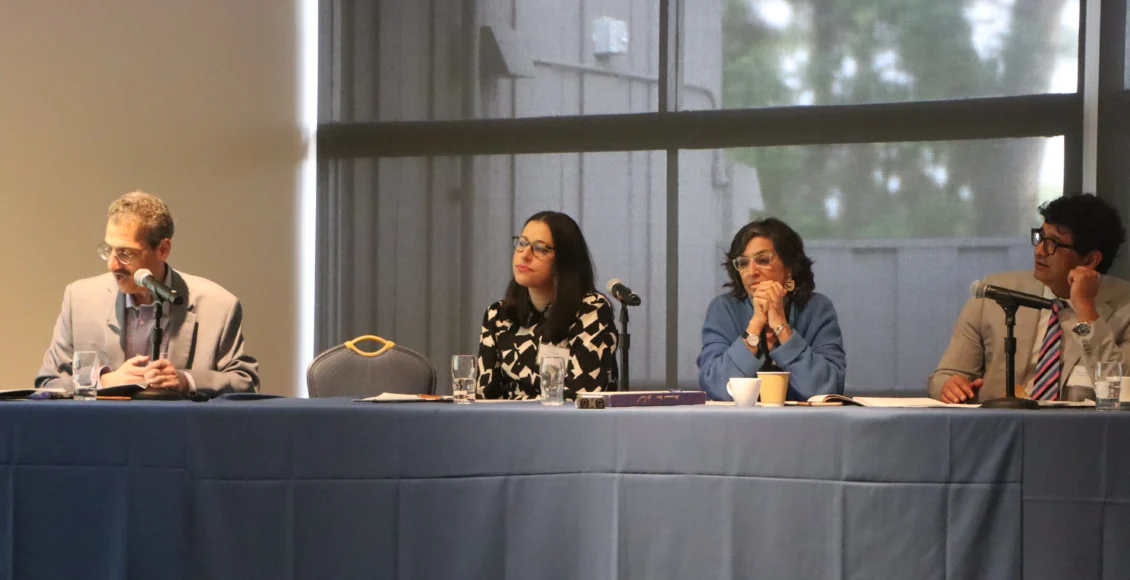
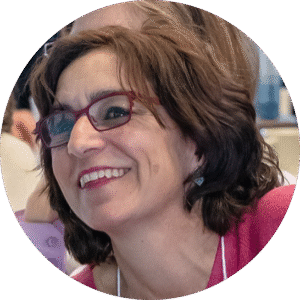 Dr. Persis Karim is the outgoing Director of the Center for Iranian Diaspora Studies at San Francisco State University. A pioneering voice in the field, she is an editor of multiple foundational anthologies, including A World Between: Poems, Short Stories, and Essays by Iranian-Americans (1999) and Let Me Tell You Where I’ve Been: New Writing by Women of the Iranian Diaspora (2006) and the author of numerous articles on Iranian diaspora culture and literature in academic journals.
Dr. Persis Karim is the outgoing Director of the Center for Iranian Diaspora Studies at San Francisco State University. A pioneering voice in the field, she is an editor of multiple foundational anthologies, including A World Between: Poems, Short Stories, and Essays by Iranian-Americans (1999) and Let Me Tell You Where I’ve Been: New Writing by Women of the Iranian Diaspora (2006) and the author of numerous articles on Iranian diaspora culture and literature in academic journals. 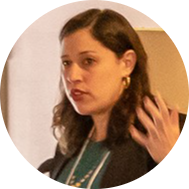 Dr. Amy Malek is a cultural anthropologist and Associate Professor at William & Mary, whose research focuses on migration, memory, and culture in the Iranian diaspora. Her forthcoming book, Culture Beyond Country: Strategies of Inclusion in the Global Iranian Diaspora (NYU Press), explores how Iranians in Los Angeles, Toronto, and Stockholm have mobilized Iranian culture to navigate inclusion in multicultural societies.
Dr. Amy Malek is a cultural anthropologist and Associate Professor at William & Mary, whose research focuses on migration, memory, and culture in the Iranian diaspora. Her forthcoming book, Culture Beyond Country: Strategies of Inclusion in the Global Iranian Diaspora (NYU Press), explores how Iranians in Los Angeles, Toronto, and Stockholm have mobilized Iranian culture to navigate inclusion in multicultural societies.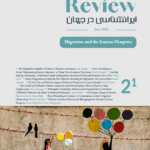
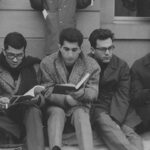

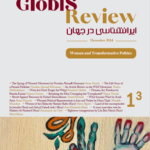

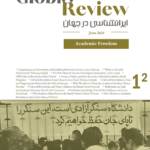
Comments are closed.